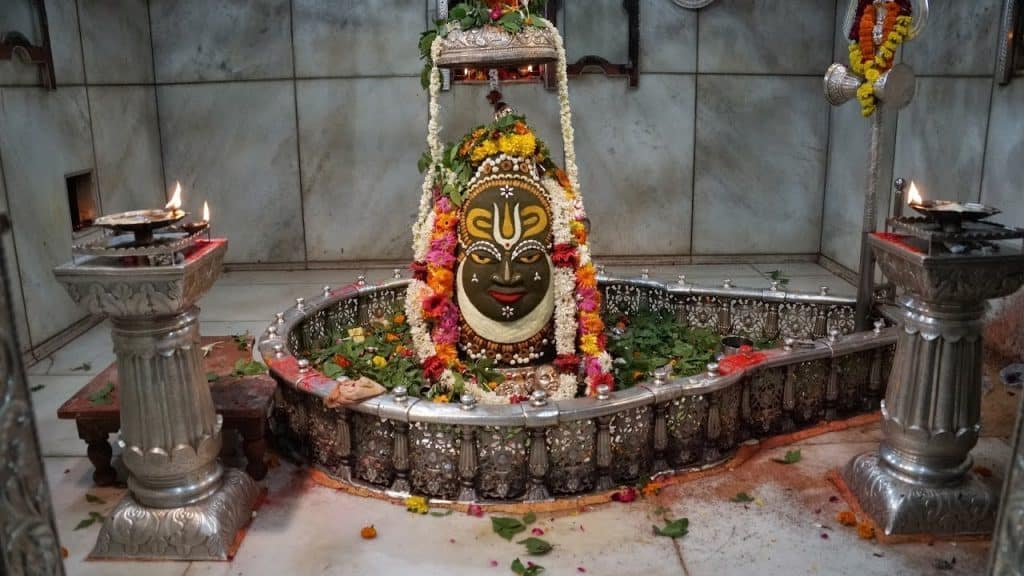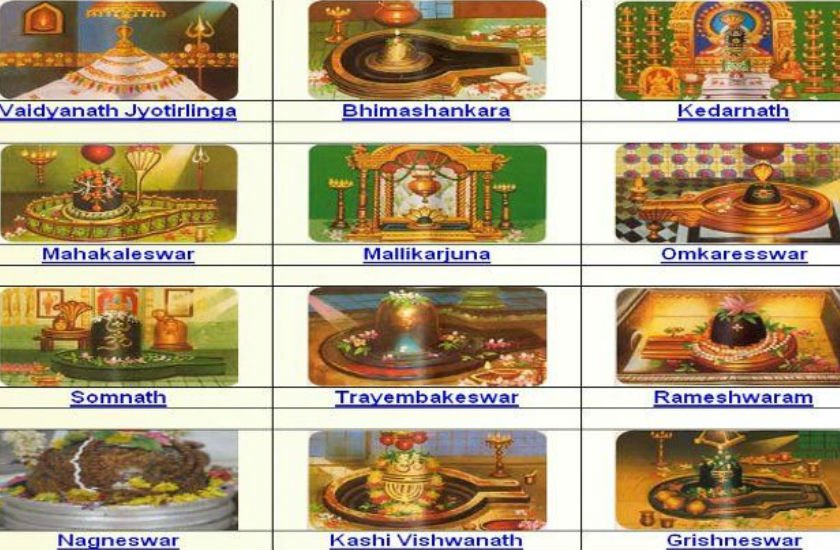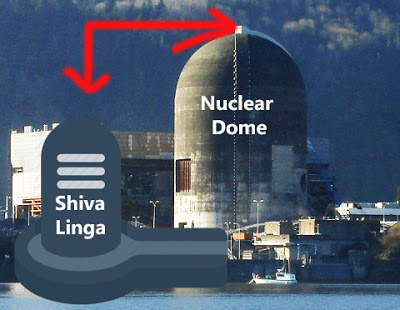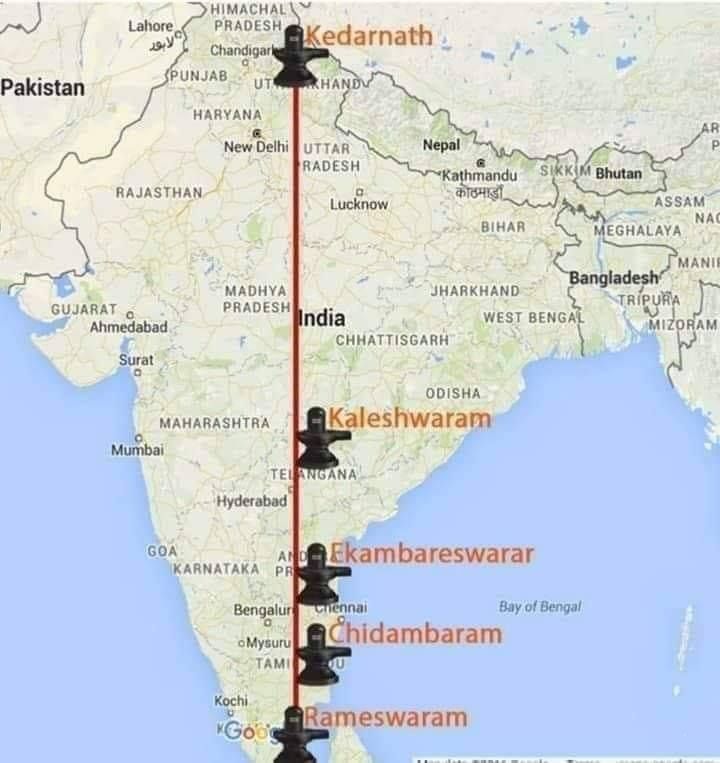
If you look at India’s radioactive map, you shall see that the 12 Jyotirlingas are actually quite close to 12 radiation sites. Some legends even term the Shiva Jyotirlingas as nuclear reactors. In fact, the Shiva Jyotirlingas are one of the oldest Nuclear reactors in India.
Let us see in detail the factors connected with this interesting fact from ancient times.
For a detailed Kundli analysis, Chat with an Astrologer

There are 12 Shiva Jyotirlingas in India. All these Jyotirlingas are present in different parts of the country and are as follows:
So, there are a lot of interpretations about Jyotirlingas in India. However, the most unique one is that if you see the shape of the Shiva lingam, you can easily notice that it is pretty much identical to a modern-day atomic reactor.
There is a deep and traditional science behind the construction of a Shivling. You shall find it fascinating that the design of the Bhabha Atomic Reactor also looks like a Shivling. Also, the water poured on the Shivalingam possesses the form of a remedy with the togetherness of the river and flowing water.

From a mythological perspective, folks in ancient times used to believe, if Mahadev or Lord Shiva ever becomes angry, a holocaust might occur. Similarly, if a nuclear reactor bursts, destruction is inevitable.
Traditionally rooted in the standing waterway below the ground level, a Shivling is a traditional depiction of not just religiousness but also a deep scientific core. The Ganga River also flows over the head of Lord Shiva, which is considered an energy-making facility.
Also Read: Simple astrological remedy to attract money in life
Well, there are multiple reasons for it.
Cooling elements like water, a crescent moon on the head of Shivling, etc., are taken into use to keep the Jyotirlingas calm and cool. It is exactly like we use water to keep the nuclear reactor cool. Interestingly, when worshipping the Linga, Shiva worshipers circumfere only 3/4th round the Shivling. In fact, they cannot cross the wastewater channel where the Shivling water flows away.
Why is it so?
Some priests say that the water coming from Shivling is utterly impure, and touching it would not be good for the devotees. This indicates that the water coming out from the Shiva Lingam is basically radioactive waste. Thus, touching it shall be harmful.
Moreover, because the Shivling water is highly reactive, even the crossing of the drainage tubes through any of them is not permitted.
Interestingly, if you notice all the things which devotees offer to Lord Shiva religiously, it is evident that they all are radiation-absorbing materials like the Bel Pattar, Dhatura to Gudhal, etc.
Also Read: Best profession for you as per the auspicious planet in your chart
The cultures Indians are born in are eternal. Therefore, a mix-up of it with the scientific arena is pretty interesting.

The important Shiva temples in the country are in a straight line beginning from the Kedarnath on the peak to Rameshwaram in the Southernmost region of India.
These temples in the order from North to South are:
They are geographically located in a straight line and religiously represent the five elements or Tatva of nature. Generally, these elements are known as the Panchbhut, meaning— air, water, fire, earth, and space. So, depending on these five elements, the Shivlings are sited:
Also Read: The kind of person you are based on your date of birth as per numerology
There is a strong connection of astrology with the Jyotirlingas. In a birth chart, if any planet is either in Maranasthana or Neech condition, the best remedy to wear off such condition is to worship a Jyotirlinga. By doing so, the weakness of such a planet would wear off, and you would be free from the negative impacts.
Also, in whichever sign the responsible planet is there, you can worship the jyotirlinga associated with that zodiac sign to attain Dharma and Satya.
If seen in totality, each Shiva jyotirlinga forms an association with one zodiac sign:
It holds its connection with Rameshwaram. As a matter of fact, it is believed that the jyotirlinga there was installed by Lord Rama. Religiously, it represents the Agni Tatwa. However, according to astrology, it shows the exaltation of the planet Sun.
The jyotirlinga associated with it is the Somnath one. It was put in place by Lord Krishna, who himself possessed the Vrishabh Lagna. Furthermore, it shows the exaltation of the planet Moon.
With the Mithun Rashi, the Jyotirlinga that holds strings with it is the Nageshwar one. So, this Shivling, as per astrology, depicts the exaltation of planet Rahu.
With the Cancer zodiac sign, the Jyotirlinga connected is Omkareshwar. So, representing the qualities of Jupiter planet, it stands for the Jal Tatva from the Panchbhut.
As per the Simha Rashi, the Jyotirlinga associated with it is Vaidyanath. Ahead, it depicts the moolatrikona sign of the Sun. Moreover, it is known to possess a string with the fifth house in the birth chart of a person.
The Mallikarjuna Jyotirlinga possessed a connection with the Virgo sign. It represents planet Mercury’s exaltation. Also, it depicts the Prithvi Tatva from the Panchbhut, according to astrology.
For the Libra natives, if you wish to strengthen your Saturn, which is in the Libra zodiac sign, worship the Jyotilinga at Mahakaleshwar. Thus, representing the Vayu Tatwa, the Mahakal is bound to betow with life and health as Lord Shiva.
The Grishneshar Jyotirlinga is connected with the dual lordship of planet Mars and Ketu.
With the Dhanu Rashi, Kashi Vishwanath holds its association. Ketu being a Mokshakarak exalts in this house. So, for a weak Ketu, worship this Shivling.
For the Makar Rashi people, the Bhimashankar Jyotirlinga is the cure. It represents the planet, Mars. So, praying here helps overcome the issues related to Mrityu.
With the Kumbh Rashi, Kedarnath marks its connection. Interestingly, many believe that Lord Shiva gave the Vedas the utmost philosophy in the form of Kedarnath.
Lastly, for the Pisces sign, the Jyotirlinga is Trimbakeshwar. So, as per astrology, it shows the exaltation of planet Venus and binds itself with the sign of curing the physical bodies.
Don’t forget to read about Number 2 In Numerology and Other Blogs at Astrotalk
31,153
31,153




Choose your and your partner's zodiac sign to check compatibility